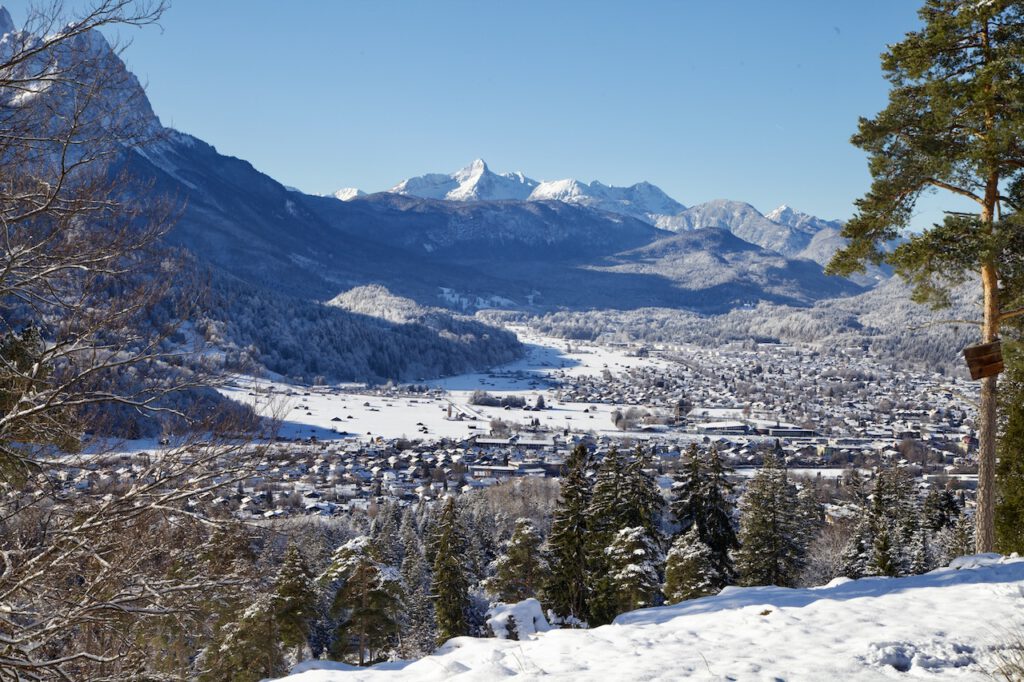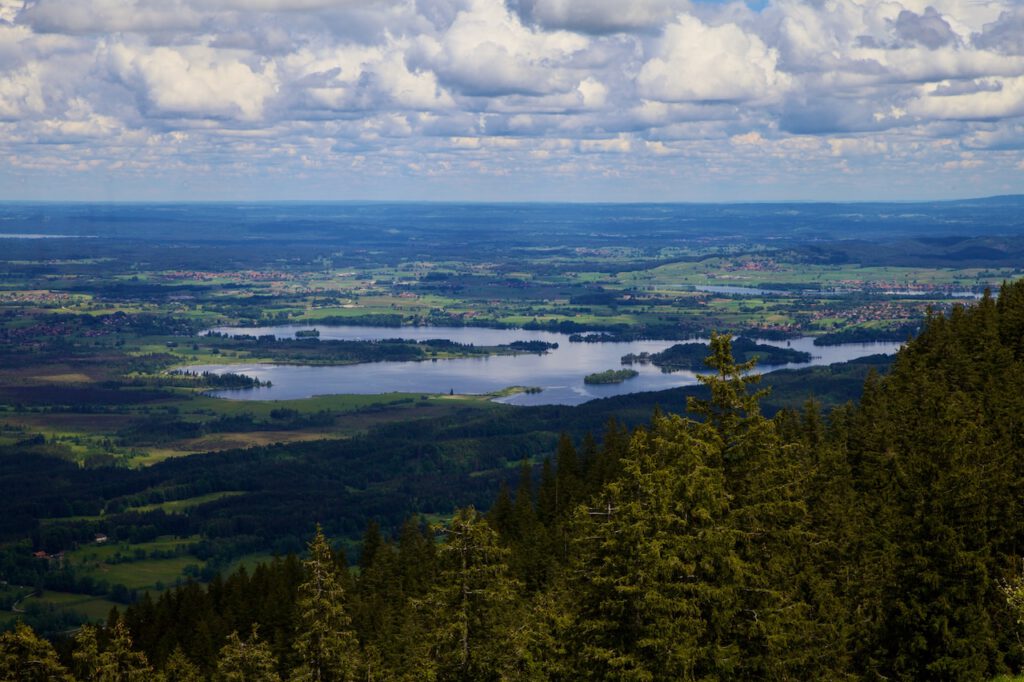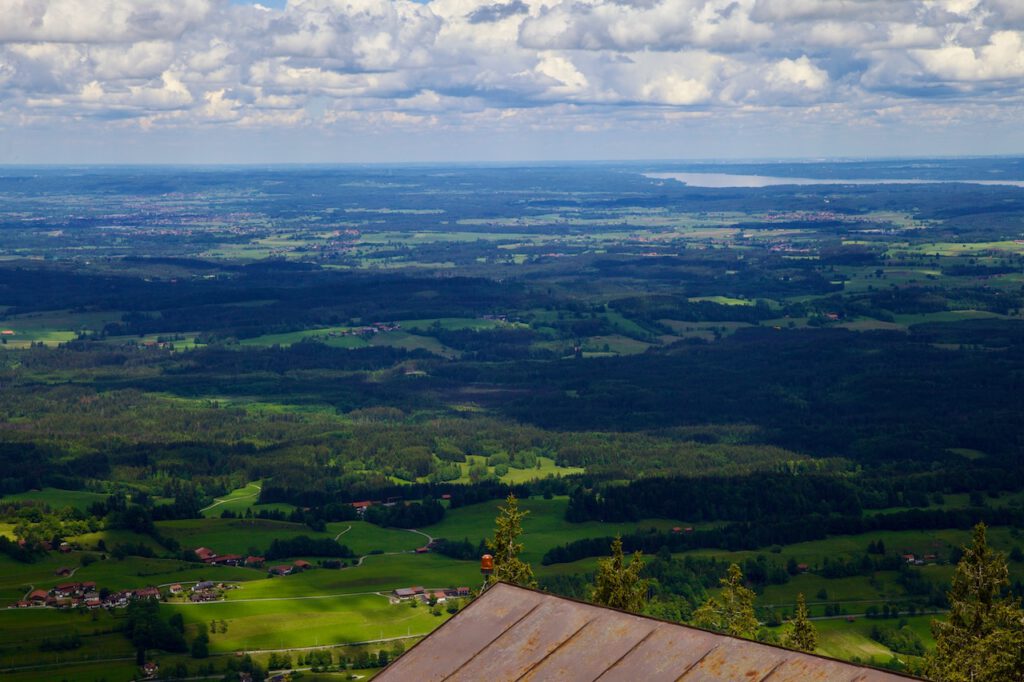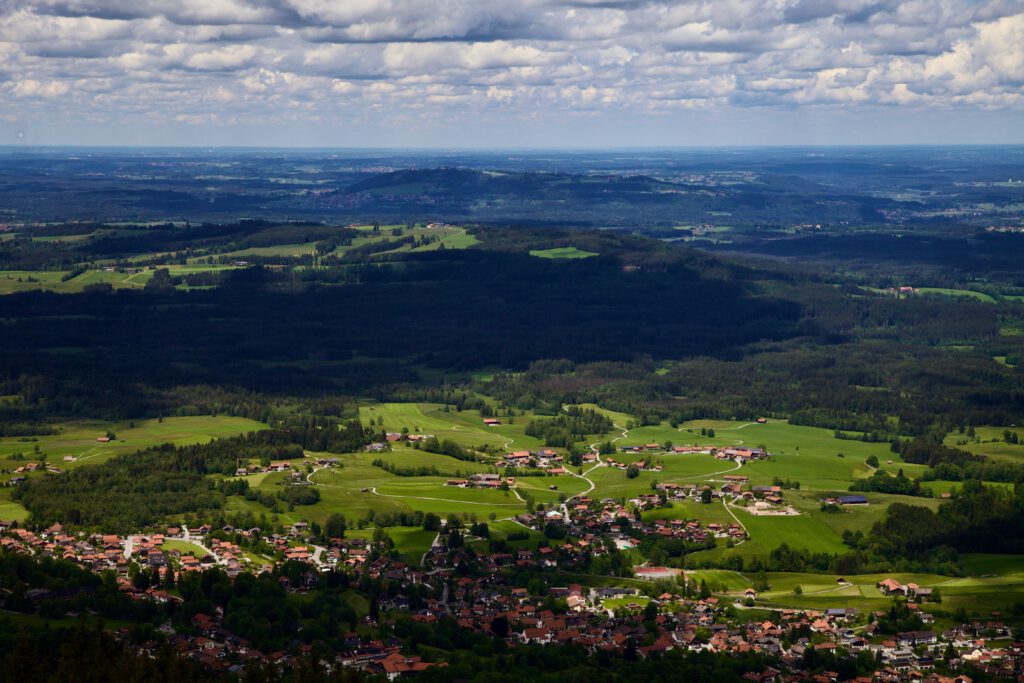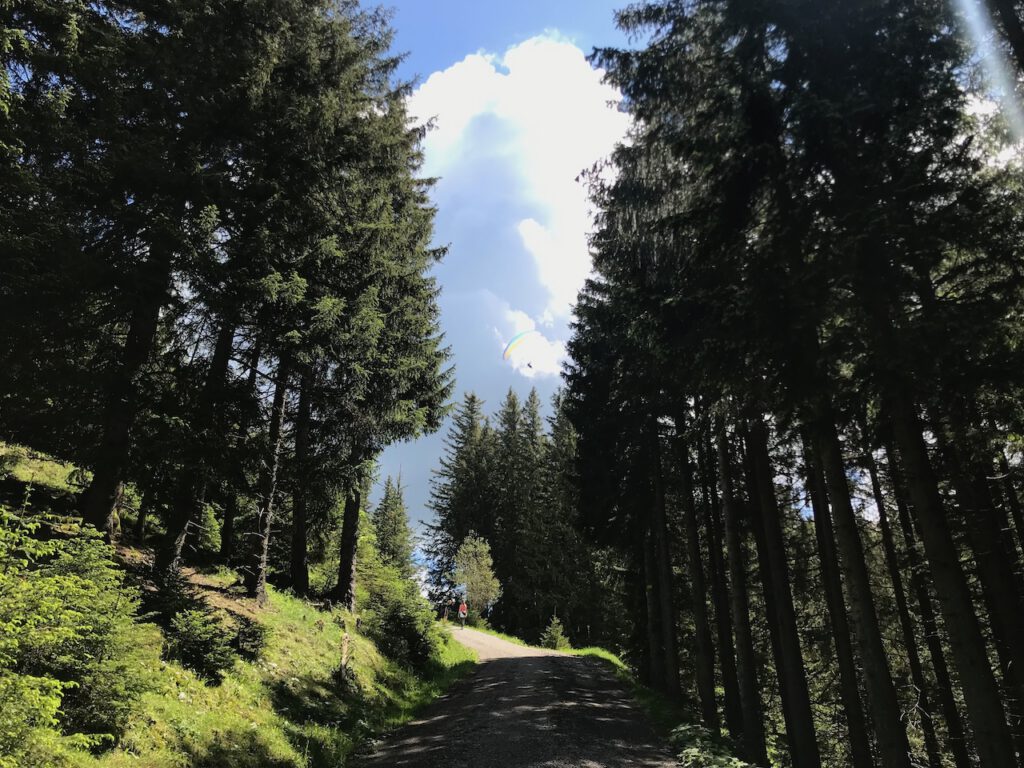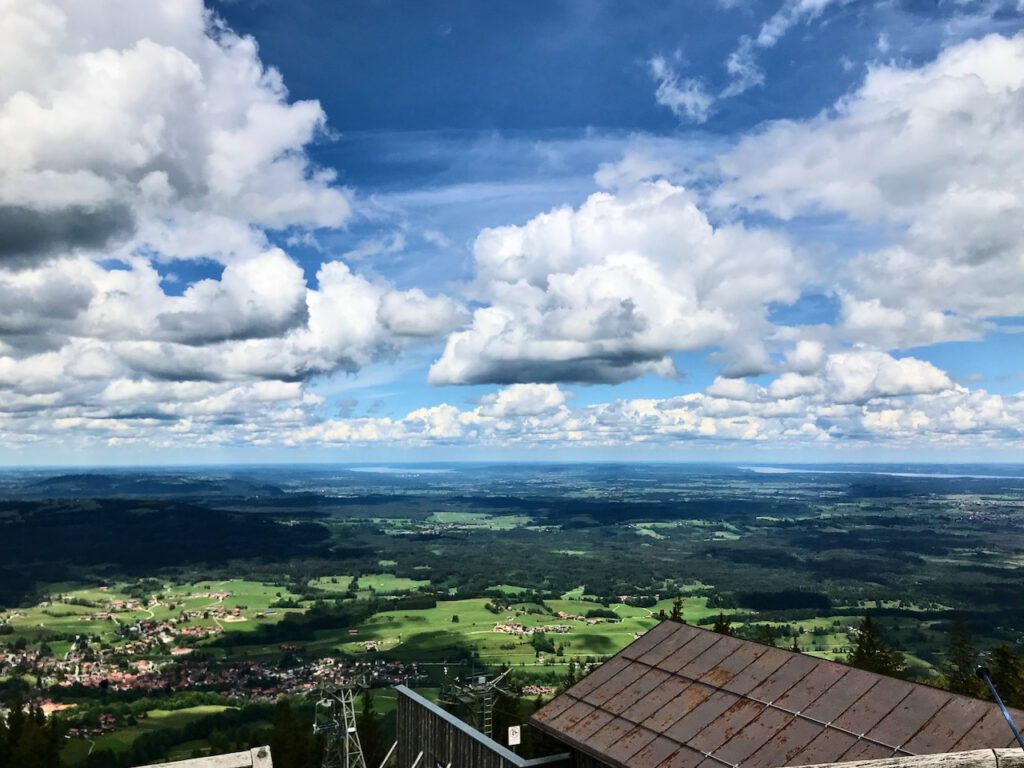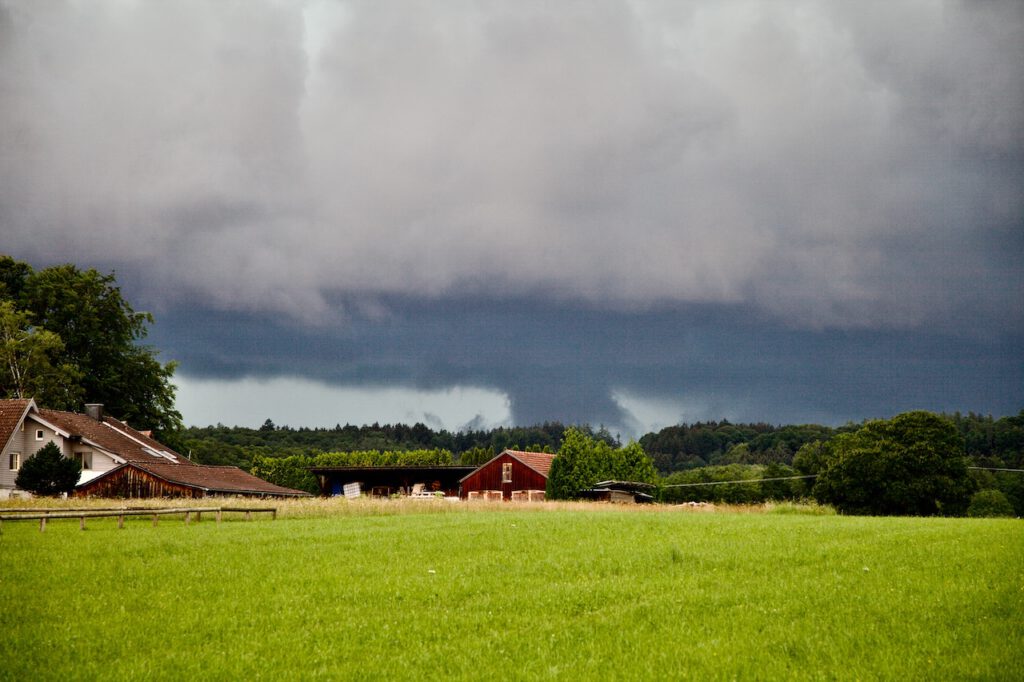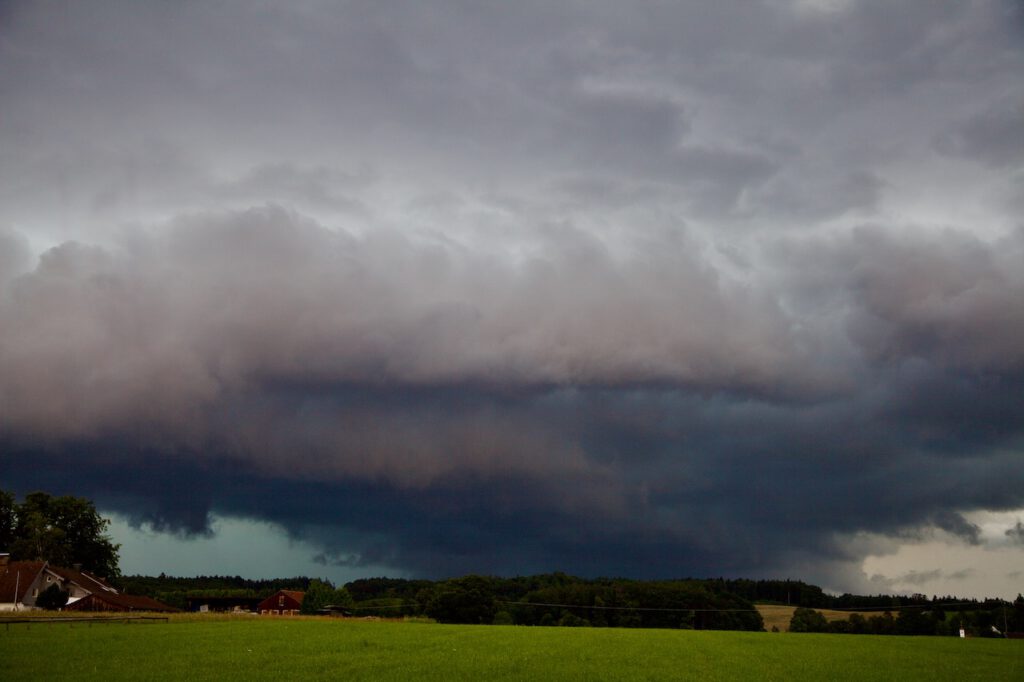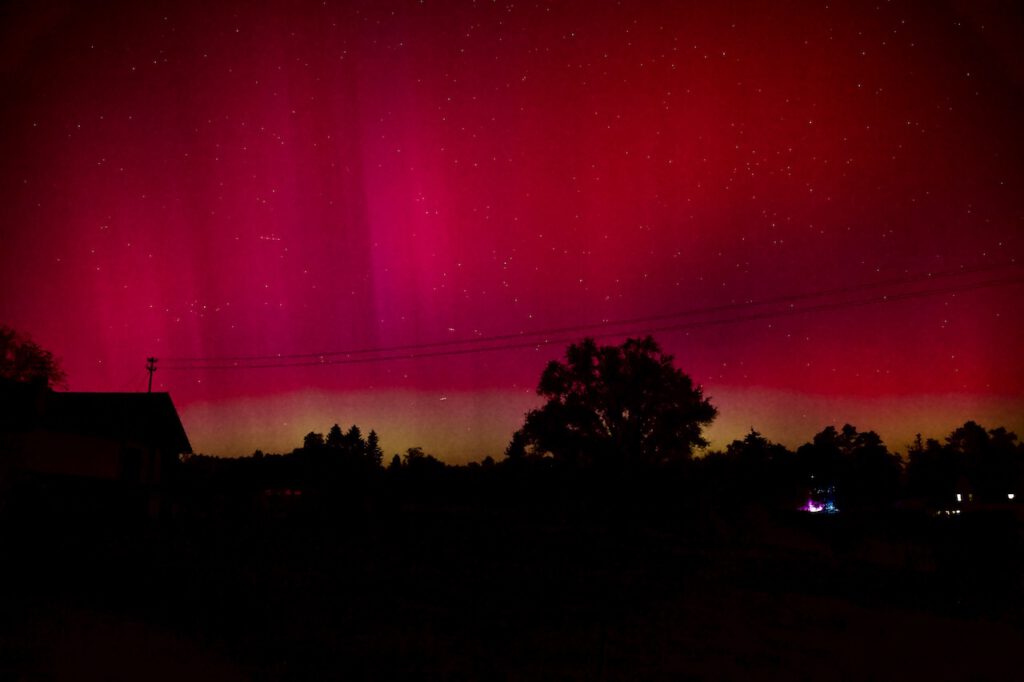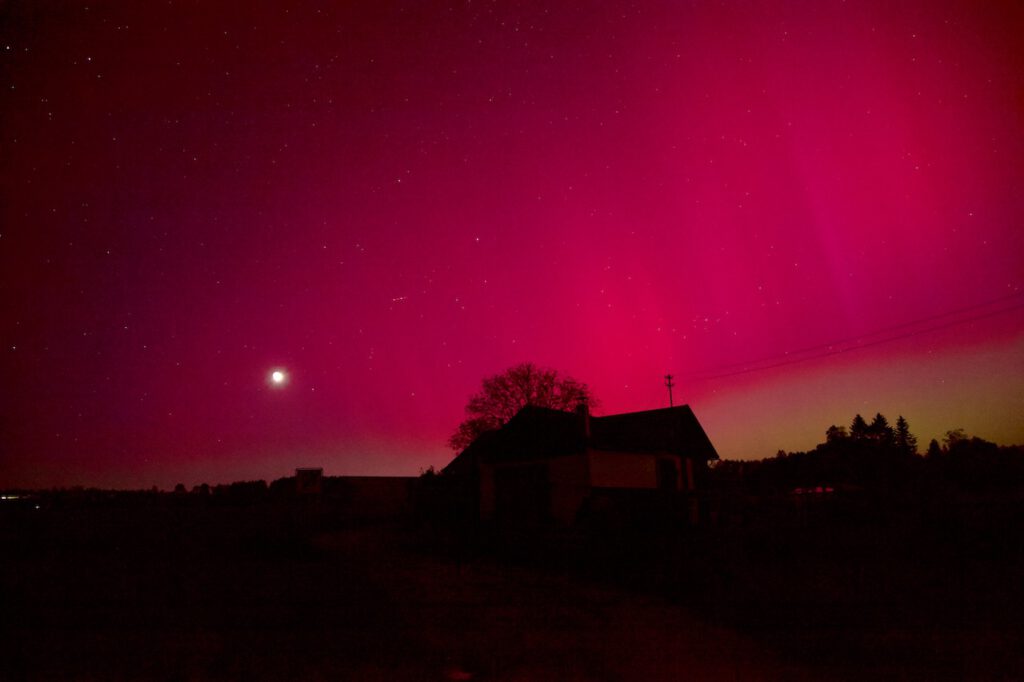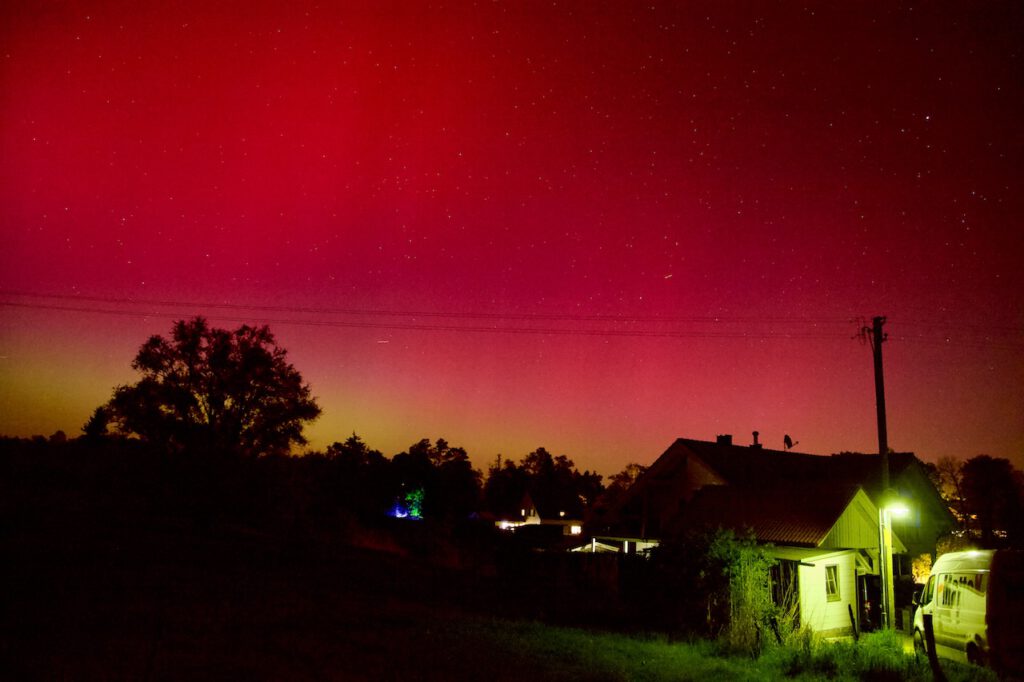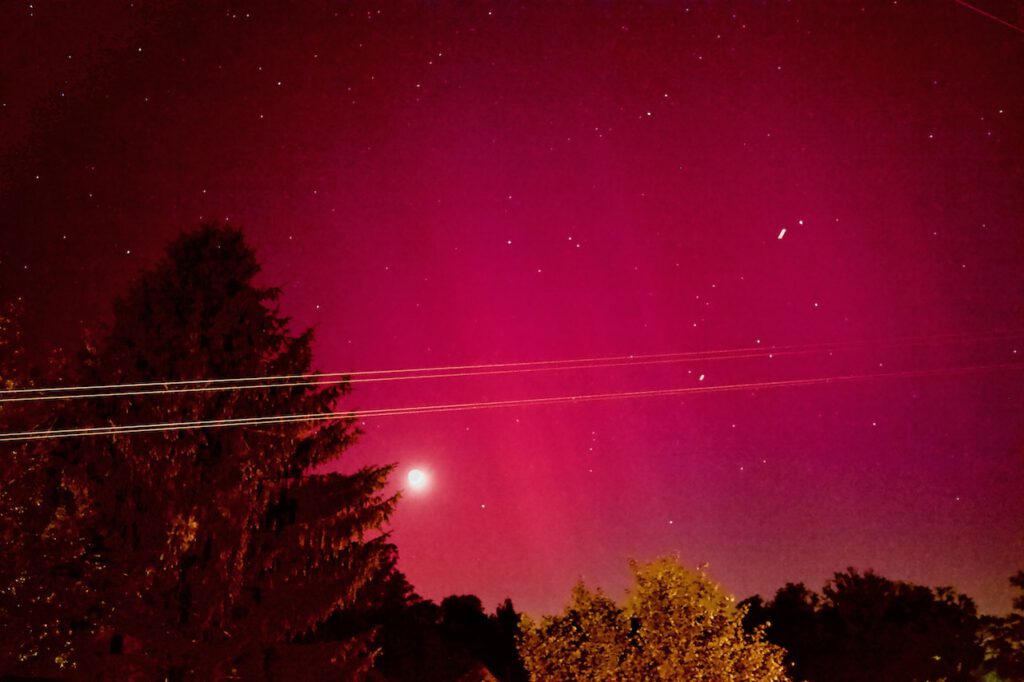OROGRAPHIC CLOUDS AND A BREATHTAKING VIEWPOINT ABOVE GARMISCH-PARTENKIRCHEN IN BAVARIA
Peter Engelmann, December 2024
The world-known Olympic town of Garmisch Partenkirchen is famous for Germany’s highest mountain Zugspitze, breathtaking gorges, and its spectacular scenery.
But it also has its unique weather phenomena. Similar to the Matterhorn the Zugspitze is a place where certain stationary orographic clouds as Banner clouds and Stratocumulus lenticularis or Altocumulus Standing Lenticular Clouds can be seen.
These orographic clouds are of particular interest to photographers as they add a unique and magical atmosphere to landscape photography.
STRATOCUMULUS LENTICULARIS
Stratocumulus lenticularis are sometimes looking like Ufo’s and were indeed mistaken for them but they are orographic clouds often connected with the Foehn phenomenon (even Foehn winds are not necessary).
In December 2024 on a fantastic winter day, there was this stack of pancakes cloud near Zugspitze.
But what are these mysterious clouds and what make them?
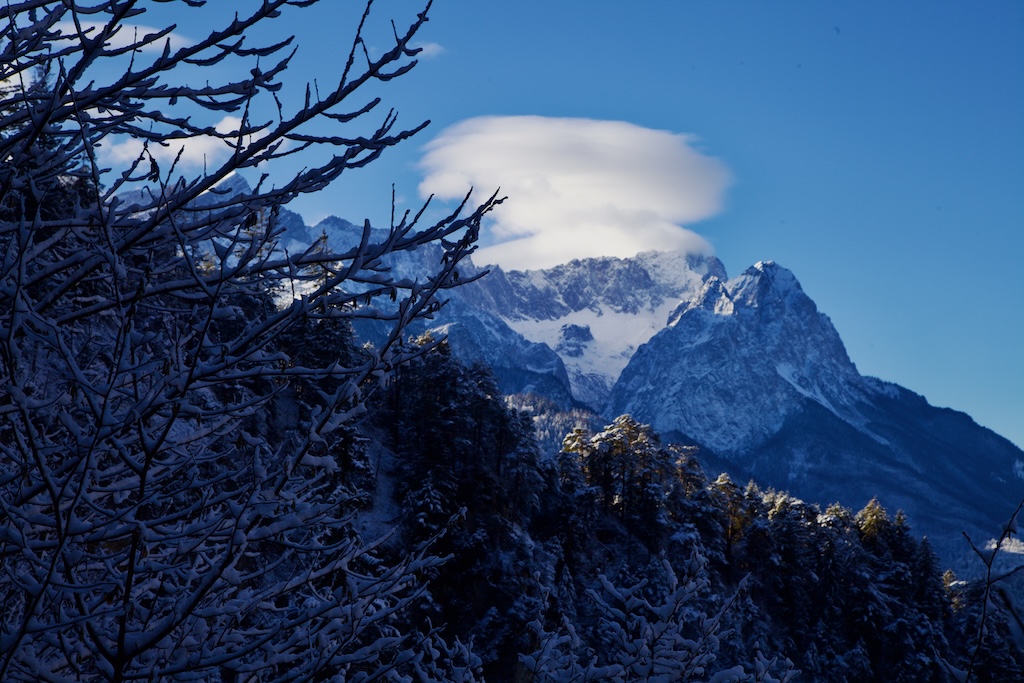
December 21, 2024: A cap on top of the Zugspitze
According to the National Weather Service Altocumulus Standing Lenticular Clouds are “associated with waves in the atmosphere that develop when relatively stable, fast-moving air is forced up and over a topographic barrier that is oriented more or less perpendicular to the direction from which the upper-level wind is blowing. This deflection creates a gravity wave downwind of the topographic barrier not unlike a wave you might generate by throwing a pebble into a pond. When sufficient moisture is present above the mountain-top level, ACSL clouds develop within the crest of these mountain waves where the air is rising. ACSL clouds are continually developing and dissipating in the vicinity of the wave's crest and immediately downwind of the crest, respectively. That is why they appear to remain stationary (hence the name) even though winds are swiftly (sometimes very swiftly) moving through the entire cloud.”
The phenomenon happens often in winter and here are some impressions of this December morning.
The orographic cloud later disappeared and in the afternoon a weather change ended the magical episode in the morning of December 21, 2024.
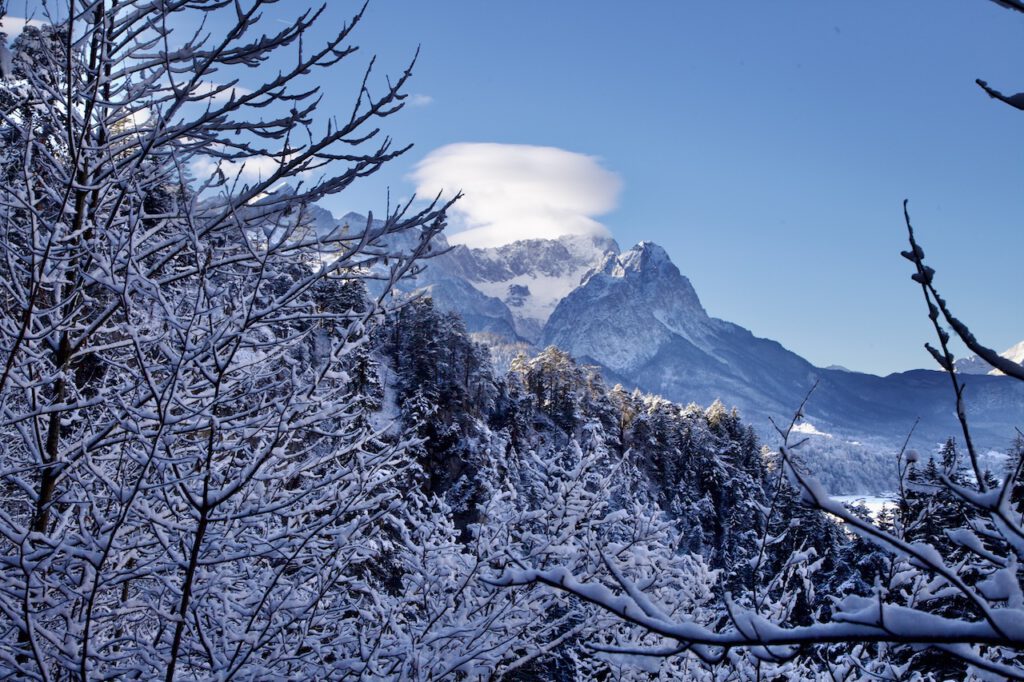
But where to watch such interesting phenomena? The Zugspitze Mountain might be close but the opposite side of the valley is better suited for such observations: Here is the Wank-Mountain or the Kramer Mountain with a famous trail. At the flank of the Wank there is a stunning modern cabin with an excellent restaurant, the Tannenhuette. Here you can enjoy a breathtaking sight of the whole Zugspitz-Mountain-Range. The pyramid-shaped Alpspitze is prominently displayed.
A couple of trails lead from the old town of Partenkirchen to the Tannenhuette. The walk takes approximately one hour.
BANNER CLOUDS
But we also have to talk about other orographic clouds which can be seen here. So-called “Banner Clouds” appear also near Zugpitze or Matterhorn.
Like the Standing Lenticular Cloud, the Bannercloud is another orographic cloud which means they are related to the relief of the landscape.
Banner Clouds seem attached to the mountain and look like a flag or a banner. The clouds appear on the leeward side of the mountain where there is no wind. Their dynamics are a field of ongoing research. This type of cloud can also be seen in Mountains like the Matterhorn or the Zugspitze.
HOW TO GET TO THE VIEWPOINT?
A couple of ways lead to the Tannenhütte above Garmisch-Partenkirchen: One trail leads through the romantic Schalmeischlucht, a gorge, not comparable to the famous Partnach Gorge but with impressing rockfaces. All trails begin in the old town of Partenkirchen.
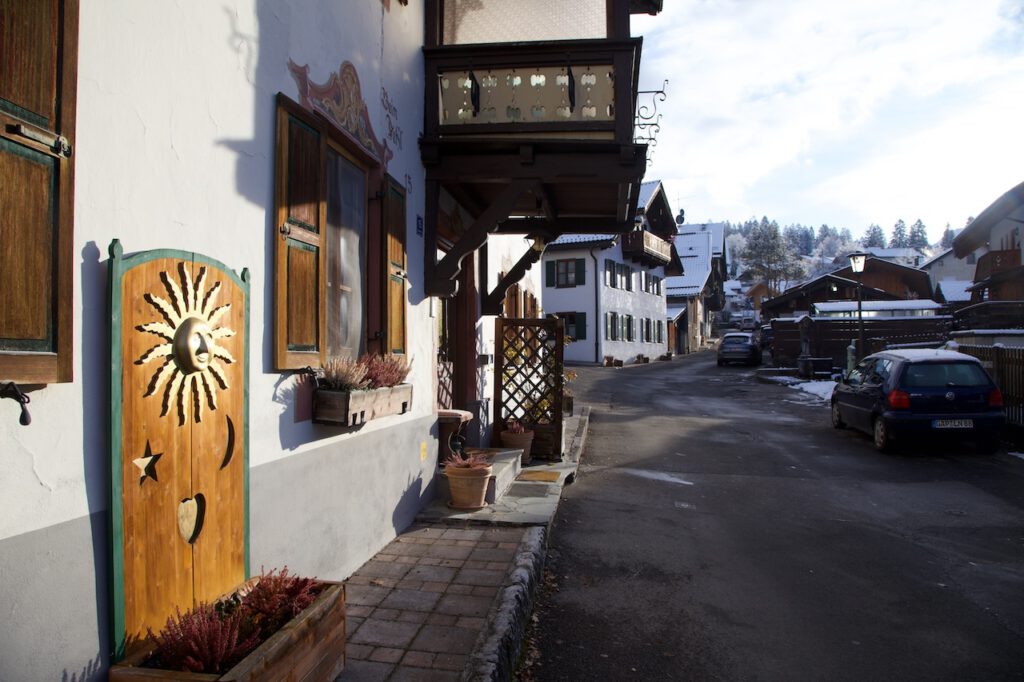
Partenkirchen: Traditional houses and the flair of a typical alpine town. The road leads to the start of the trail.
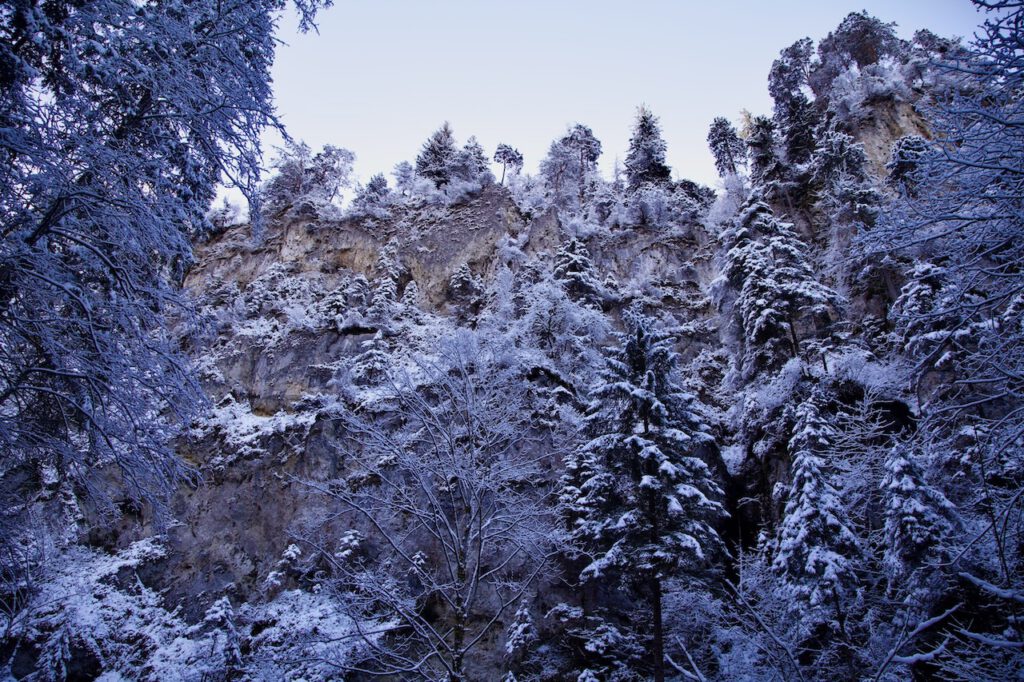
One of the trails leads to the wild and romantic Schalmei-Gorge. A real insider tip in Garmisch Partenkirchen
Another trail is easier and a broad path which is also the transport path for the cabin. This is certainly a safer choice in winter because the steep mountain trail in the Schalmeischlucht can easily become slippery. Shortly before the Tannenhuette, there is an impressive suspension bridge. Those who have problems with such types of bridges can take a walk around them and reach the cabin without problems.
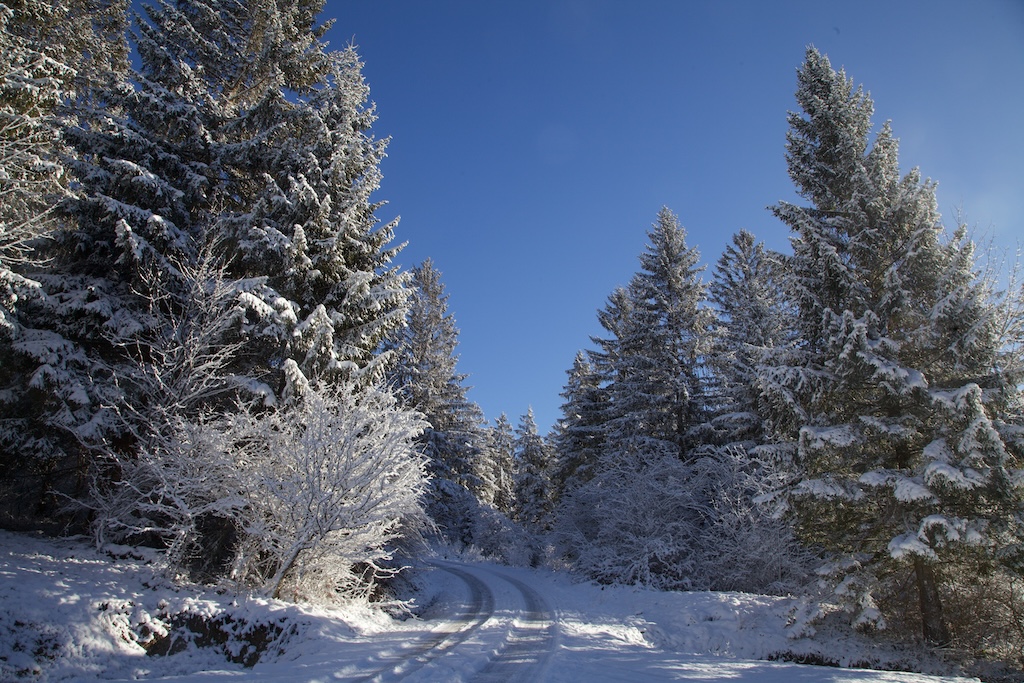
The other trail is easier and leads through a majestic mountain forest.
Garmisch-Partenkirchen is easily accessible by train from Munich and Innsbruck. Particularly on weekends, the streets are very crowded, thus the train is a good option. Either take a footwalk to Partenkirchen or wait for the bus (Nr.4+5). Trails are leading further around the Wank Mountain massive. There is also a cable car to the top of the Wank.
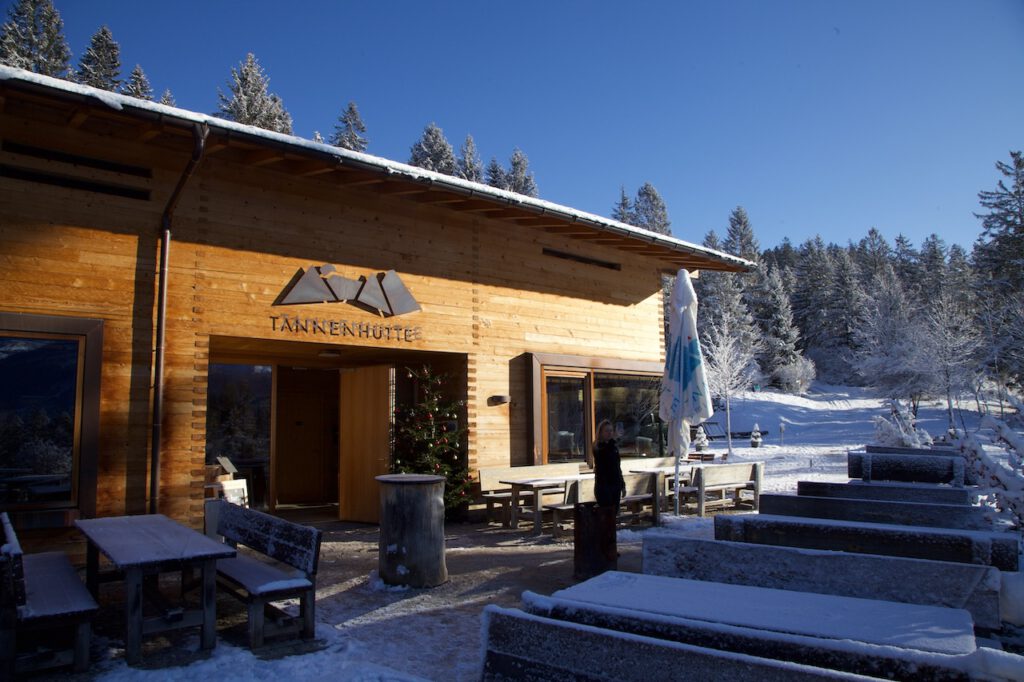
The modern Tannenhütte is a fascinating destination also for those who are interested in contemporary alpine architecture.
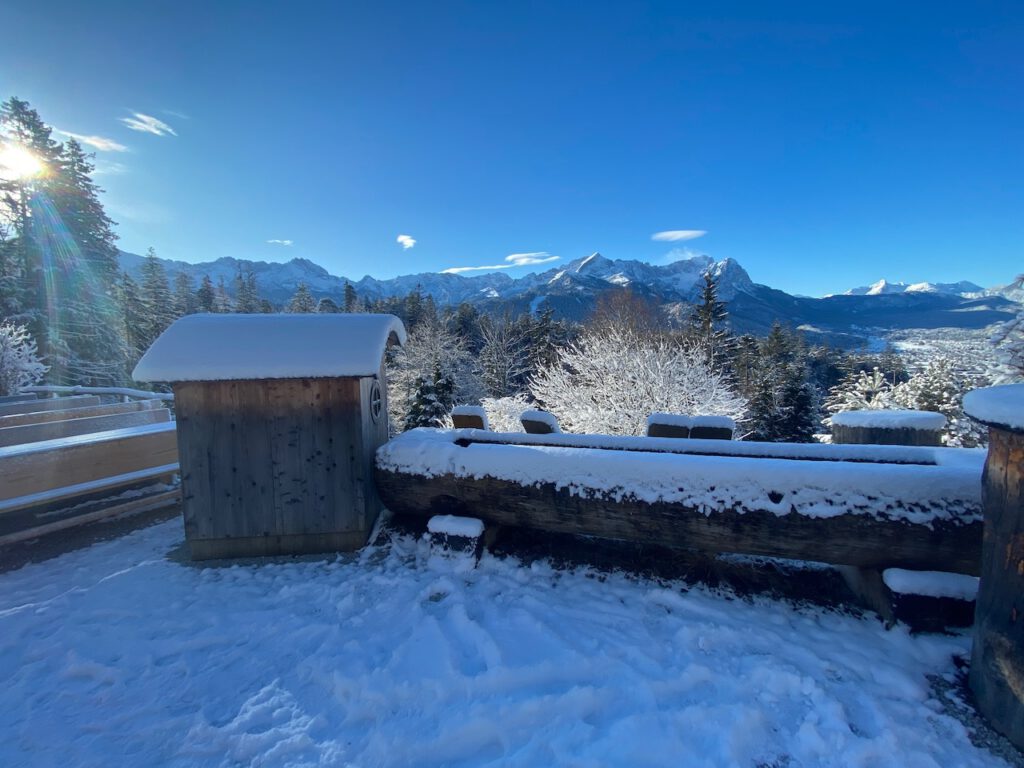
A great scenic viewpoint for hikers, photographers, and videographers.
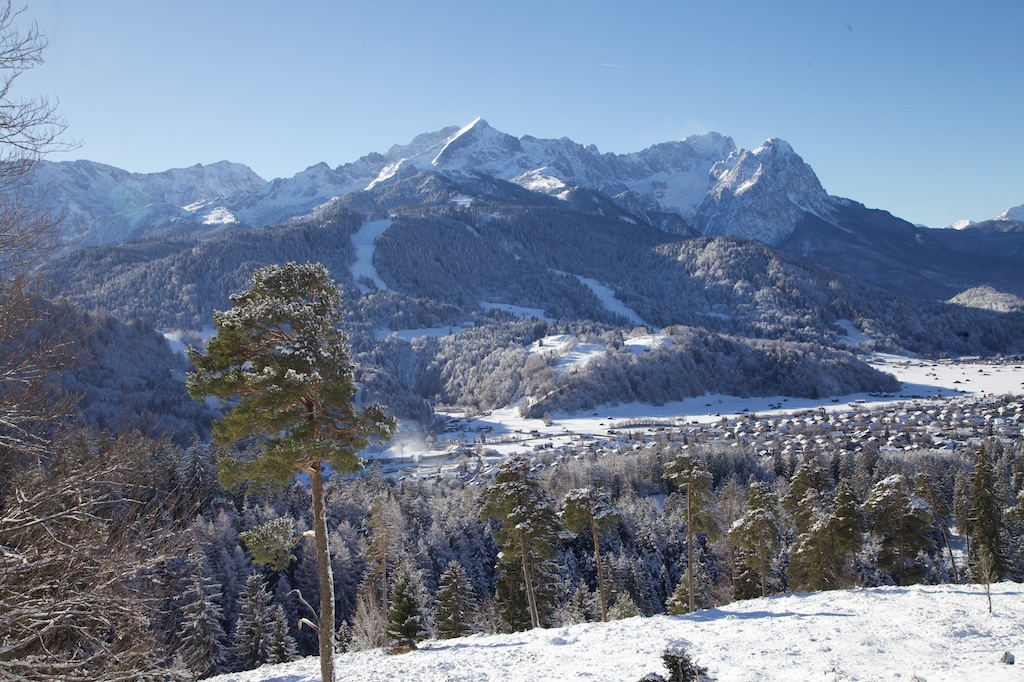
The whole Zugspitze Mountain range can be seen from here. In the middle is the Alpspitze.
Photographers appreciate the fantastic view over the whole of Garmisch Partenkirchen. The view extends far to the west.
